Results 6,861 to 6,870 of 12094
Thread: Anandtech News
-
04-13-17, 03:28 PM #6861
Anandtech: GALAX and KFA2 Katana: Single-Slot GTX 1070 GPUs Coming Soon
GALAX and KFA2 have added single-slot GeForce GTX 1070 Katana video cards to their lineups, which is usually an indicator that the graphics adapters are going to hit the market shortly. The add-in-boards (AIBs) will be the only thin GTX 1070 high-end graphics cards on the market and will join a few other single-slot adapters in GALAX's lineup.
As discussed before, when GALAX first demonstrated a prototype of its single-slot GeForce GTX 1070 Katana graphics card, single-slot gaming AIBs are uncommon these days because GPU developers and hardware makers use dual-slot coolers for everything with a TDP of 75 W and higher. While most of gaming desktops can accommodate at least one double-wide graphics adapter, there are systems equipped with extra add-in-boards (audio, SSD, additional SATA or Thunderbolt 3 controllers, etc.) that may require slim single-slot components as there is simply not enough space inside. For this reason, single-slot graphics cards from ELSA and now GALAX and KFA2 will find their buyers.
The GeForce GTX 1070 Katana graphics cards from GALAX and KFA2 are produced by Palit Microsystems, the owner of the two brands. To make the boards thinner than their counterparts, the manufacturer had to develop a custom PCB design with a 4+1-phase VRM moved towards display outputs. Such design ensures that cool air takes heat away from the GPU first and only then the air is applied to inductors, MOSFETs and capacitors of the VRM (which are sturdier). The GeForce GTX 1070 Katana graphics adapters run their GPUs at 1518/1708 MHz (base/boost), which is very close to NVIDIA-recommended frequencies and thus the cards only require one 8-pin PCIe auxiliary power connector.
Another key element of the adapters is their single-slot cooling system that relies on a copper radiator with a vapor chamber and a high-pressure blower. The lid of the radiator has special openings above the VRM that exhausts part of the hot air and helps to better cool-down inductors and MOSFETs. In addition, there are exhaust holes on the bracket, therefore, at least part of the hot air is blown away outside of the PC. Palit does not disclose the maximum noise level produced by its cooling system, but it is logical to expect it to be noisier than their large brethren with multiple fans and doublewide radiators.
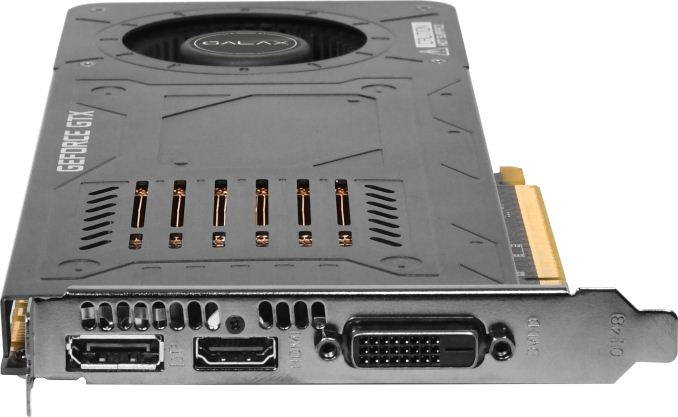
Since the GeForce GTX 1070 Katana cards are thin, the manufacturer had to sacrifice two out of five display connectors offered by most of the GP104-based designs. The graphics adapters feature a DisplayPort 1.4, a DVI-D output and an HDMI 2.0b connector. On the other hand, as most gamers use only one monitor, three different headers will be enough for vast majority of the target audience.
GALAX and KFA2 have not announced MSRPs of their GeForce GTX 1070 Katana graphics cards for their respective regions. Since the boards are unique, it is likely that they will be sold at a premium. Typically these cards are difficult to source outside of China or Japan, so it is worth letting these companies know if you want them in other regions.
Gallery: GALAX and KFA2 Launch Single-Slot GeForce GTX 1070 Katana Graphics Cards





Related Reading:
- ELSA Launches a Single-Slot GeForce GTX 1050 Ti 4 GB SP
- GALAX Shows Off Single-Slot GeForce GTX 1070 Graphics Card
- Palit Announces KalmX: A Passively-Cooled GeForce GTX 1050 Ti Graphics Card
- GIGABYTE Quietly Launches Low Profile GeForce GTX 1050, 1050 Ti Graphics Cards
Sources: GALAX, KFA2
More...
-
04-14-17, 09:09 AM #6862
Anandtech: SK Hynix Launches 72-Layer 256 Gb 3D TLC NAND with Increased Performance
SK Hynix has formally introduced its fourth-generation 3D NAND memory chips with 72 layers. Initially, the 3D TLC flash chips will be offered in 256 Gb configurations, but by the end of the year the manufacturer plans to introduce 72-layer 3D TLC NAND devices with 512 Gb capacities. All of SK Hynix’s fourth-gen 3D NAND chips will feature a larger block size, a lower programming time and a faster interface, which is expected to result in higher performance levels compared to the company's third-gen ICs.
As reported previously, 72-layer 3D NAND is a very important product lineup for SK Hynix because the company plans to offer such memory for a wide range of applications, and because such memory allows it to use its production facilities more efficiently (at least, according to the manufacturer). The company has been experimenting with 3D NAND for quite a while and launched its first commercial 36-layer 128 Gb 3D MLC NAND (which it calls 3D-V2) chips in 2015. The 3D-V2 ICs were primarily used for removable storage devices, but the 256 Gb 48-layer 3D TLC NAND (3D-V3) ICs that hit mass production in late 2016 are used for removables, embedded storage and will be used for SSDs in the coming months.
The initial 72-layer 3D TLC NAND (3D-V4) chips do not increase capacity versus their direct predecessors, but decrease their die size by approximately 30%, allowing SK Hynix to fit more of such chips on a single wafer. Unfortunately it is hard to estimate how the 50% increase of the number of layers affects the length of SK Hynix’s manufacturing cycle and costs, as SK Hynix naturally does not make any additional disclosures. Moreover, the company does not reveal whether it uses string stacking technique and stacks two 36-layer wafers together, or uses etching and produces 72 layers “natively.”
In addition to being smaller, the 72-layer 256 Gb 3D TLC NAND flash memory ICs also feature higher performance due to a 20% higher Toggle 2.0 interface data rate, a 50% larger block size compared to 48-layer 3D TLC chips (13.5 MB vs 9 MB) as well as a lower page programming time. SK Hynix does not disclose exact numbers for the interface and the tPROG, but it is logical to suspect that the new chips support 667 MT/s and, perhaps, 800 MT/s interface speed, just like some of the competing ICs. In any case, with increased block size and a lower tPROG (which SK Hynix calls 2x faster “internal operation speed”), any increase of the external interface speed from 533 MT/s of mainstream NAND today is more than welcome.
SK Hynix said it would start mass production of its 72-layer 256 Gb 3D TLC NAND (3D-V4) ICs in the second quarter of the year and such flash memory chips would be used for various storage devices (including those for mobile applications (e.g., smartphones)) in Q3 2017. The company’s product catalogue for Q1 2017 already lists 256 Gb 3D-V4 chips as well as multi-chip packages with 512 Gb – 4096 Gb (64 GB – 512 GB) capacities due to be available in Q2 2017 (such MCPs are used for mobiles). SSDs based on the new chips will be available after SK Hynix itself and its partners validate them, so, expect drives featuring the 48-layer 3D TLC NAND from the company to arrive first.
From SK Hynix’s Q1 2017 product catalogue we also know that later this year SK Hynix also plans to roll out 72-layer 512 Gb 3D TLC NAND chips (64 GB), which are expected to be available in Q4. It is crucially important for SK Hynix to increase the interface speed of its upcoming 3D-V4 ICs to 800 MT/s to reduce the performance penalty that comes from consolidating more flash onto fewer independent chips (and to stay competitive with Samsung’s 64-layer 512 Gb components). The upcoming ICs will enable the company as well as its partners to build higher-capacity storage solutions. For example, the SK Hynix’s catalogue lists a 8096 Gb (1 TB) MCPs based on the 512 Gb devices.
Related Reading:
- SK Hynix Lays Out Plans for 2017: 10nm-Class DRAM, 72-Layer 3D NAND
- SK Hynix to Build a New NAND Fab, Upgrade Existing DRAM Fab
- Toshiba Samples 64-Layer 512 Gb BiCS 3D NAND, Announces 1 TB BGA SSD
- Micron 2017 Roadmap Detailed: 64-layer 3D NAND, GDDR6 Getting Closer, & CEO Retiring
- Samsung at Flash Memory Summit: 64-layer V-NAND, Bigger SSDs, Z-SSD
More...
-
04-14-17, 12:09 PM #6863
Anandtech: NZXT Releases Kraken G12 Liquid Cooler GPU Mounting Kit
NZXT has announced its Kraken G12 mounting kit, which is designed to allow video cards to mount a closed-loop liquid cooler. In junctionwith a cooler, the adapter can significantly decrease GPU temperatures and improve cooling of VRMs; it is compatible with various coolers and cards.
Closed-loop liquid cooling systems (LCSes) for CPUs have gained popularity among enthusiasts in the recent years due to high efficiency amid relatively small dimensions. But while high-performance GPUs have higher TDPs (and therefore greater heat generation) than advanced CPUs, few LCSes can be attached to graphics cards out of the box. Some companies (e.g., Corsair) offer special adapters (brackets) to make their liquid coolers compatible with popular graphics boards, but NZXT is the one of a few vendors to offer mounting kits that are designed to be compatible not only with the company’s own LCS, but with other popular liquid coolers as well.
The NZXT Kraken G12 is a relatively simple device that consists of bracket compatible with various waterblocks from NZXT, Corsair, Thermaltake, Antec, and Zalman as well as multiple reference and non-reference graphics cards based on AMD or NVIDIA GPUs (see the table). The Kraken G12 is equipped with a 92-mm fan with up to 1500 RPM speed that can cool down the various video card components that aren't covered by the LCS, such as DRAM chips and VRM components (inductors, MOSFETs, capacitors, etc.). All of which is important, especially as the latter get very hot under high load.
In fact, the Kraken G12 is not the first product of the kind from NZXT. Several years ago it released its Kraken G10 bracket for then-contemporary coolers and video cards. The Kraken G12 just expands the list of compatible components, uses a new fan with a lower rotating speed and adds a white option. From a technical point of view, making the Kraken G12 compatible with LCSes from five different suppliers is not a problem as compliant closed-loop liquid coolers are designed for standard CPU sockets and are made by Asetek, so, their constructions are similar.NZXT Kraken G12 Matte White
RL-KRG12-W1Matte Black
RL-KRG12-B1Dimensions 201 × 113 × 32 mm Materials Steel and Plastic Weight 282 g Fan 92-mm, 1500 RPM, rifle bearing with 3-pin connector Compatible Graphics Cards AMD RX 480, 470, R9 390X*, 390*, 380X*, 380, 290X*, 290*, 285*, 280X*, 280*, 270X, 270, R7 370, HD7970*, 7950*, 7870, 7850, 6970, 6950, 6870, 6850, 6790, 6770, 5870, 5850, 5830
* Some variations in AMD die height may require the use of a copper shim which is not included.NVIDIA Titan X, Titan, Geforce GTX 1080, 1070, 1060, 980 Ti, 980, 970, 960, 780 Ti, 780, 770, 760, 680, 670, 660Ti, 660, 580, 570 Compatible AIO LCS Antec KUHLER H2O 920V4, 620V4, 920, 620 Corsair H105, H110, H90, H75, H55, H50 (CW-906006-WW only) NZXT Kraken X62, X52, X42, X61, X41, X31, X60, X40 Thermaltake Water 3.0 Riing RGB 360, 280, 240, Red 280, 140,
Water 3.0 Ultimate, Extreme S, Extreme, Pro, Performer
Water 2.0 Extreme, Pro, PerformerZalman LQ-320, LQ-315, LQ-310 Warranty 2 Years
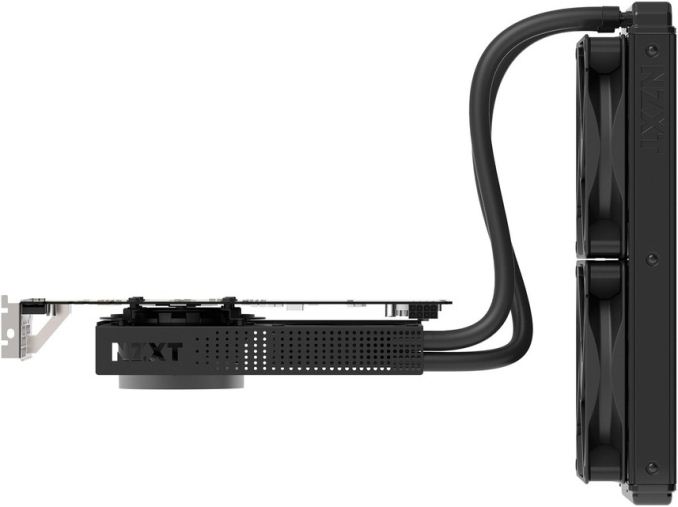
The NZXT Kraken G12 will be available towards the end of the month for $29 in the USA.
Gallery: NZXT Kraken G12





Related Reading:
- NZXT Kraken G10 Review: Liquid Cooling for Your GPU
- Closed Loop AIO Liquid Coolers: 14-way Mega Roundup Review
- Closing the Loop: Contained Liquid-Coolers from Corsair and NZXT Compared
- The NZXT Manta mITX Case Review
- NZXT H440 "EnVyUs" Edition Chassis Announced: H440 Gets an e-Sports Edition
- NZXT Unveils Fully Customizable Aer RGB LED Fans
- Raijintek Shows Off Pumpless Liquid Cooling System
More...
-
04-14-17, 02:24 PM #6864
Anandtech: Display Report: Huawei P10 and P10 Plus
Huawei recently added the P10 and P10 Plus to its lineup, which focus on fashion and photography like other P-series phones. The Huawei P10 has a 5.1-inch IPS LCD panel with a typical 1920x1080 resolution (431ppi) and a 16:9 aspect ratio. The P10 Plus, as its name implies, is an upscaled version of the P10, with a larger 5.5-inch IPS LCD panel. It also bumps resolution to 2560x1440 (534ppi), which is not really necessary for an IPS panel at this size. Both panels are covered with Gorilla Glass 5 and come with a plastic screen protector pre-applied. Some people may appreciate the extra protection included out of the box, but the cheap protector does not allow your finger to slide smoothly across the screen and gets gunked up with skin oil very quickly. The glass underneath does not appear to have an oleophobic coating either, which is an odd omission for a flagship phone.
A well-calibrated, quality display would be a nice compliment to the dual rear cameras on both phones, allowing you to view the captured photos accurately. Previous Huawei phones have suffered from poor calibration, however, so we’ll take some measurements to see if there’s any improvement with the new P10s. As always, we use an X-Rite i1Pro 2 spectrophotometer for color measurements and an i1Display Pro colorimeter for luminance measurements, profiling it with SpectraCal's CalMAN software.
Both the P10 and P10 Plus exceed 500 nits at peak brightness, a little shy of the 600+ nits a few phones can achieve, including Huawei’s Mate 9, and a little less than last year’s P9. It’s not clear if the P10’s backlight is using 20 LEDs like the P9 or if it has gone back to using 16 LEDs, which is more common for a 5-inch class display.
The values in the chart above were measured by setting the brightness manually. Many phones, especially those with OLED displays, can temporarily boost brightness to increase visibility in extreme cases such as direct sunlight when using the auto-brightness mode. The iPhone 7 and 7 Plus, for example, hit 706 and 618 nits, respectively, and Samsung’s Galaxy S7 hits 532 nits using this boost mode. The P10s do not have this auto-brightness boost feature; however, their peak brightness is still sufficient for outdoor use. At the other extreme, brightness drops all the way down to 2-3 nits at the minimum setting, making the P10s easy to use in a completely dark room.
Black level and contrast ratio are measured at the panel’s maximum brightness. Because black level increases with brightness, the numbers in the chart above are not directly comparable; however, after accounting for this effect, black levels for the iPhone 6s Plus, iPhone 7 Plus, Mi MIX, and both P10s are comparable, so the P10 displays are likely using photo-aligned crystals to improve black level and contrast ratio.
The phones with OLED panels are not shown in these charts because they are able to achieve a black level of zero and a mathematically infinite contrast ratio by being able to completely turn off individual pixels.
P10:P10 Plus:Huawei is notorious for calibrating its displays to an overly cool white point, and the P10s are no exception. With an average white point of about 8,400K when using the “Default” setting, a little higher than both the P9 and Mate 9, the P10s show an obvious blue tint when looking at a white screen. The imbalance between the blue and red primaries leads to poor grayscale accuracy. Average ΔE2000 grayscale error is greater than 6 with peak error reaching 8-10 at higher luminance values.
Like other Huawei phones, the P10s allow you to adjust the white point by selecting predefined “Cold” or “Warm” color temperature modes. You can also set a custom white point target by dragging a finger around a color wheel. The Cold setting shifts the average white point to about 9,000K, giving the screen an even darker blue tint. The Warm setting still shows a deficit in red, giving it an average white point of 7,400K, still well above the D65 target value, shifting the screen’s tint from blue to aqua.
Using the P10’s color wheel, I was able to adjust the RGB balance, giving a small boost to the red primary while pulling green closer to the ideal value. In the “Custom” graphs above, you can see how this reduces grayscale error over the full luminance range. Despite these improvements, I was not able to get average CCT below about 7,600K, so the screen still has a blue tint.
The P10s use adaptive display technology that adjusts both the backlight intensity and gamma based on the content being displayed and the ambient light conditions. This technology aims to reduce power consumption and improve the display’s visibility, especially when using the phone outdoors.
P10:P10 Plus:Both P10s use wide color gamut displays that nearly cover the entire DCI-P3 color space, only falling short of the blue target value. This leads to oversaturated colors when viewing content that targets the sRGB color space (shown by the inner triangle in the graphs above) because of Android’s lack of color management. The Default and Cold settings exhibit the greatest saturation error, especially for color shades beyond the 50% saturation level. There’s also a significant shift in hue towards blue because of the cool white point. The Warm and custom settings achieve a better RGB balance, significantly reducing both hue shift and saturation error to more acceptable levels, at least out to about the 60% mark. The P10s do not have an sRGB mode, so people that prefer accurate rather than vibrant colors are out of luck.
Measuring the spectral power distribution (SPD) of the P10 Plus’ backlight with a spectrometer shows how it and the smaller P10 cover a wider color gamut. Typical sRGB panels use blue LEDs, resulting in a sharp peak around 450nm. These are coated with a yellow photoreactive phosphor that creates smaller, broader peaks in the green and orange portions of the spectrum. The backlights used in the P10s still use blue LEDs, which is evident from the same sharp peak at 450nm, but the sharper peak output in the green and red portions of the spectrum are the result of using red and green phosphors instead of a single yellow phosphor.
P10:P10 Plus:Using the P10’s Default setting provides similar color accuracy to the Mate 9 and is a little better than the P9, both at their Default settings. For the colors tested, ΔE2000 error hovers around the critical threshold of 3, above which color error is easily noticeable. Most of the error results from the wide gamut panel and oversaturated colors, but the cool white point also produces significant hue shift. The Warm and customized settings produce better results by reducing the error from hue shift.
Our P10 and P10 Plus did not show any backlight bleed or issues with luminance uniformity. Viewing angles are also very good, avoiding the noticeable white, red-tinted glow that affects the Mate 9 even at shallow viewing angles. The P10s have some IPS glow, but it’s very minor when viewing the screen normally in portrait or landscape mode, only becoming noticeable when looking across the screen diagonally, which is not something you would normally do. There are not any significant issues when viewing the displays through polarized sunglasses either, with only a very slight reduction in brightness in landscape mode.
Display performance for the P10 and P10 Plus is similar to other recent Huawei phones. The wide gamut panels are bright enough to view outside and produce vibrant, but not particularly accurate, colors. They also share the same overly cool white point, which gives the screens a noticeable blue tint. Using the Warm setting, or adjusting the white point manually, improves both grayscale and color accuracy, but accuracy remains elusive even when using the manual option because of poor calibration. The viewing angle improvements are certainly a step in the right direction, but the P10s cannot match the display quality of other flagship phones.
More...
-
04-15-17, 08:41 AM #6865
Anandtech: AMD Acquires 60 GHz Wireless IP and Staff from Nitero
AMD on Tuesday announced that it had acquired millimeter wave radio-related intellectual property and key engineers from Nitero. Nitero specialized in radio technology for the 60 GHz range, which is expected to be the basis of a number of short range wireless standards.
AMD indicated that they purchased Nitero in order to focus on developing the necessary technology to wirelessly connect AR and VR headsets to host PCs, thus improving AR/VR experience. Though more broadly speaking, Nitero’s low-latency 60 GHz wireless interface in general can be used in various ways to connect different devices, and owning such an IP may be important for AMD’s patent portfolio.
Current-generation VR headsets connect to PCs using HDMI interface, which is very convenient, but which naturally reduces freedom of movements and sometimes adds certain complications. Since VR headsets are just head-mounted displays with audio, usage of HDMI is just natural because the interface has enough bandwidth for high-resolution high-framerate graphics and because the software stack is already here — OSes, drivers, applications “understand” what HDMI is. Moreover, with 10.2 Gbps raw throughput (8.1 Gbps with 8b/10b overhead removed), the HDMI 1.4 provides enough bandwidth for 2160×1200 at 90 Hz resolution offered by the HTC Vive and the Oculus Rift.
Meanwhile cables sometimes negatively affect VR/AR experiences and even usage models. A number of companies (DisplayLink, TPCast, Nitero etc.) have been trying to use the millimeter wave radio technology to build wireless VR headsets and some of them even demonstrated their devices at MWC 2017 earlier this year. It is not completely clear whether the 60 GHz radio used by the three aforementioned companies is compliant with the WiGig (802.11ad) specification, but Nitero is known for its WiGig chips for mobiles.
At present, WiGig is used for wireless docking stations and provides ~7 Gbps of bandwidth, which is enough for transmission of documents or files, but is barely enough even for current-gen VR headsets (not to mention input lag). Nonetheless, it is important to start from something and it appears that AMD is betting on Nitero’s technologies. Just to add perspective, the WirelessHD 1.1 standard designed by Silicon Image supports up to 28 Gbps data transmission rate — that is comparable to DP 1.4 and is enough for 4Kp120 with compression (or 8Kp60), so 60 GHz radios can scale very well.
AMD said that Nitero had created a phased-array beamforming millimeter wave chip that can enable “multi-gigabit transmit performance with low latency” for VR headsets without line-of-sight requirements associated with some other implementations of millimeter wave radio technologies, which suits wearables very well. AMD is not disclosing exactly what they intend to do with the IP beyond further developing it for VR/AR, so it's not clear at this time whether they intend develop their own products from it. AMD could further develop the IP and then license it out for partners to build the final products, or design the chips themselves and sell that to partners as part of a reference kit. There's also the possibility of integrating the IP into their other products, though the extreme short range nature of 60 GHz wireless does pose some unique challenges to applications that aren't line-of-sight.
So far, wireless display technologies (apart from Miracast) have not really taken off due to various reasons. But since so many companies are working on such technologies based on 60 GHz radio, the prospects of its millimeter wave radio IP here may be considerably more promising for AMD if it manages to popularize the standard first among developers of VR headsets and then among makers of displays.
Putting our speculations aside, the only thing that AMD shares now is that the Nitero acquisition is a long-term investment that could enable the company to create more immersive computing experiences.
Related Reading:
- The Khronos Group Announces New Standards Collaboration for VR Integration
- IFA 2016: Live Blog of AMD Keynote with Mark Papermaster, CTO
- Intel Announces Project Alloy: Untethered Augmented Reality in a VR Headset with RealSense
- GDC 2017 Roundup: VR for All - Pico Neo CV, Tobii, & HTC
- Oculus VR Acquires The Eye Tribe, Developer of Eye Tracking Technologies
- IFA 2016: Qualcomm Announces VR820 Reference Platform, QCA9379
More...
-
04-15-17, 12:40 PM #6866
Anandtech: G.Skill Announced 16 GB DDR4-4333 Memory Kit for Intel Kaby Lake CPUs
G.Skill on Friday announced its new top-of-the-range DDR4 memory kit for dual-channel PCs running Intel’s Kaby Lake processors. The new Trident Z kit for operates at 4333 MT/s (DDR4-4333), though it requires a bit of extra voltage to get there. In addition, the company said that it was working on even faster DDR4 DIMMs.
The new G.Skill Trident Z memory modules are based on Samsung’s 8 Gb DRAM ICs (B-die, 20 nm), which also power other high-end DIMMs from the company. The 16 GB kit (F4-4333C19) consists of two 8 GB modules rated for DDR4-4333 operation with CL19 19-19-39 timings at 1.4 V, which is above the standard high-performance voltage setting for DDR4 (1.35 V) and is considerably higher than JEDEC-specification of 1.2 V. Just like the rest members of the Trident Z family, the new DDR4-4333 kit comes with aluminum heat spreaders (so, no RGB LEDs just yet) as well as SPDs with XMP 2.0 settings.
G.Skill is the Trident Z DDR4-4333 kit for use with Intel’s Z270 platforms and Kaby Lake processors. So far, G.Skill has only validated its F4-4333C19-8GTZ modules on the ASUS ROG Maximus IX Apex motherboard and the Intel Core i5-7600K processor, but expect the list of compatible mainboards to expand over time.
In addition to announcing the new DDR4-4333 kit, G.Skill also teased DDR4-4400 (F4-4400C19-8GTZ) and even DDR4-4500 (F4-4500C19-8GTZ) 8 GB memory modules working in dual-channel mode. The company is still working on such DIMMs and finalizing their specifications (timings, voltages, etc.), so do not expect them on the shelves for a bit.
It should be noted however that this week's announcement is just that: an announcement. The actual product release will come later. G.Skill has not yet announced when that will be; presumably the company is still binning chips and building up a launch supply. We'd also expect the retail price of the kit to be announced at that time. At present, a dual-channel 16 GB DDR4-4266 kit costs around $250, so it's reasonable to assume the new DDR4-4333 kit will be priced above that.
Gallery: G.Skill Announced 16 GB DDR4-4333 Memory Kit for Intel Kaby Lake CPUs




Related Reading:
- G.Skill Announces Trident Z RGB DDR4 Kits with 16 GB Modules, Up to 128 GB
- G.Skill Announces Trident Z DDR4 DIMMs for Kaby Lake CPUs
- G.Skill Announces Trident Z RGB Illumination to DDR4
- G.Skill Shows Off Trident Z 8x8 GB and 8x16 DDR4-3333 Memory Kits
More...
-
04-17-17, 08:26 AM #6867
Anandtech: Upcoming LGA3647 Skylake Xeons: A Tyan 2P Skylake-SP Motherboard Leaked
The next generation of high-performance Intel Xeons will be the second stage of Intel rearranging its professional stack. Stage one was separating chipset requirements of low core count Xeons from the consumer counterparts, but stage two to occur later this year will be something to wrap your head around. We still haven’t confirmed most of the salient details, such as significant changes in the naming and strategy when it comes to socket and die differentiators, but what we do know is that the large E5-class Xeons (some of which may or may not get a name change from –EP to –SP) will be in the LGA3647 socket, which is exactly where the current generation of Xeon Phi, Knights Landing (KNL), also sits as they will be pin compatible. So for the most part, E5 CPUs will move from the current LGA2011-3 sockets up to a much larger design, and rather than go into the details of what that means, this news post is more about seeing motherboards that support them in the wild. We expect to hear more about the new Skylake-SP Xeon platform in the summer, probably at IDF in August, but for now we get to gaze on accidental leaks like this one.
Exxact Corp, an Intel enterprise system integrator, posted up details regarding a pair of upcoming motherboards from Tyan, a well-known Intel enterprise motherboard manufacturer. These motherboards use a pair of LGA3647 sockets on the top of the board, with the DRAM slots above and below to assist with airflow through a server. As with some of the 2P motherboards we see today, the sockets are slightly staggered due to connectors and trace layouts, but both sockets exhibit a full six channels of DRAM with one DIMM per channel (1 DPC, we expect Skylake-SP Xeons to support 2DPC or 3DPC depending on the model).
While the image is small, and low quality, some determinations can be made. The specification list of the TYAN S7100GM2NR (and TYAN S7100AG2NR) is fully listed on the SI website as well.
Each socket will support a TDP of 205W, which is up from the previous maximum of 160W on CPUs like the E5-2687W v4 that were focused on high performance. This might mean that Intel is targeting an even higher window for their CPUs, or there will be added silicon on board (how Intel plans to integrate FPGAs into the ecosystem is still unconfirmed, but rumors have been surfacing), or the fact that Xeons might be paired with Knights Landing Xeon Phi chips, which are currently offered from 215W to 260W. Technically that is above the socket TDP for this Tyan board, but that might be because of how the Tyan board expects to be positioned without Xeon Phi, and we might see motherboards with higher TDP ratings and the power delivery to back them up.Tyan S7100xx2NR Motherboard Specifications S7100GM2NR S7100AG2NR CPU Support Intel Xeon Scalable Processor Family
(Xeon-SP) up to 205W TDPChipset C621 (LBG-1G) Memory 6+6 DDR4-2666 Slots
Up to 768GB RDIMM/LRDIMMNetwork 2 x RJ45 GbE (Intel I350-AM2) PCIe 4 x PCIe 3.0 x16
3 x PCIe 3.0 x8PCIe Storage 1 x PCIe 3.0 x4 M.2-2280 (CPU)
1 x PCIe 3.0 x4 M.2-2242 (PCH)Storage 14 x SATA 6 Gbps w/RAID USB 4 x USB 3.0 (rear) IPMI Aspeed AST2500 - Audio - Realtek ALC892
The chipset is listed as Intel’s C621, which is not listed on ark.intel (the site that holds Intel’s chip specifications), indicating it is a new chip. Typically the chipsets ending in ‘1’ are the low-end models, with Intel putting C608, C236 and others at the top of their respective stacks. The website where the Tyan motherboard is listed also states 'LBG-1G', which is a secondary indicator of the chipset and it's capabilities. We have seen documents signalling potential different types of Intel chipset for the SP platform, and this corresponds with one of those, particularly the '1G' part which is a nod to the fact that this chipset will directly support gigabit ethernet. We won’t comment on unconfirmed details regarding the chipset stack from Intel, however it is expected that the capabilities of the chipset stack will be expanded for Skylake-SP compared to older platforms.
With the memory, the website confirms six memory channels per CPU. The website states that the board can support 768GB of RDIMM/LRDIMM DDR4-2666 memory, and given that we have 1DPC this means that the support is the sum across both sockets, leading to 64GB modules maximum.
PCIe support shows four primary PCIe 3.0 x16 slots, interspersed with secondary PCIe 3.0 x8 slots. With experience, these secondary slots are most likely switched with the primary slots, such that when occupied the primary slots are reduced to PCIe 3.0 x8 bandwidth. Even with the low-resolution image, it is clear that there is no big PLX 8000-series or 9000-series PCIe switch chip-on-board, suggesting that these lanes are all native to the CPUs. As the board supports four PCIe 3.0 x16 slots natively, this indicates that either a single CPU can support 64 PCIe lanes, or that each CPU takes 32 PCIe lanes. We would expect the latter to be the case for this generation of Xeon processors.
Additional to the PCIe slots, there is some storage in PCIe form, with a single M.2-2280 slot being listed as from the CPU, and supporting PCIe 3.0 x4. This most likely comes at the expense of a PCIe 3.0 x8 (as in, when the M.2 is installed, a PCIe 3.0 x8 is either disabled or drops to a PCIe 3.0 x4), depending on exactly how the PCIe root complexes are configured in the Xeons. If the Xeon has a full 40 lanes, installation of M.2 storage probably has no direct effect. For other storage, the website lists an M.2-2242 slot as supporting PCIe 3.0 x4 from the chipset. These new chipsets may mirror the newer consumer chipsets by having plenty of PCIe lanes free for this sort of configuration, though the interesting thing here is limiting it to the 2242 size. There are enterprise drives available in 2242 (and a few consumer ones), although at that size you have limited dies to take advantage of the parallelism needed to saturate a full PCIe 3.0 x4 slot. Along with the PCIe storage, the motherboard will also support 14 SATA 6Gbps ports, all listed as being from the chipset due to Intel RSTe 5.0 RAID support. This would indicate that the new chipsets also have increased native SATA capability (previous generations had 10 SATA ports, of which only six were RST capable).
Other connectivity on the boards is listed in terms of Ethernet (two gigabit RJ45 ports from an Intel I350-AM2 controller), USB 3.0 ports (four on the rear) and TPM support. The two boards from Tyan differ in the IPMI and Audio: the S7100GM2NR has the Aspeed AST2500 BMC with iKVM and IPMI, whereas the S7100AG2NR has a Realtek ALC892 audio codec instead.
With a larger image of the motherboard, more analysis may have been possible. But seeing this motherboard being listed this early, and publicly, is unexpected (and probably breaks someone's NDA along the line). Nonetheless, system integrators like this are reaching out to potential partners for sales and taking inquiries about future product designs.
Sources: Link
Many thanks to @momomo_us for the link.
More...
-
04-17-17, 11:00 AM #6868
Anandtech: Intel Discontinues the Intel Developer Forum; IDF17 Cancelled
In a bit of breaking news this morning, it appears that Intel has decided to cancel their Intel Developer Forum tradeshow going forward, including this summer’s expected IDF17.
In an announcement posted on the IDF website, Intel has announced that IDF is no more, and that the entire IDF program is ending.
Intel has evolved its event portfolio and decided to retire the IDF program moving forward. Thank you for nearly 20 great years with the Intel Developer Forum! Intel has a number of resources available on intel.com, including a Resource and Design Center with documentation, software, and tools for designers, engineers, and developers. As always, our customers, partners, and developers should reach out to their Intel representative with questions.Previously, Intel had stated that there would not be an IDF in China this year. However an IDF was still expected in the US, albeit with a “new format.” Prior to today’s update, Intel’s IDF page stated the following (as can be seen on this cached copy of the page).
We are making changes to the Intel Developer Forum. This fall the event in San Francisco will have a new format and we will not be hosting an event in China. More details to come soon.Meanwhile the official Moscone Center Calendar had (and still has) Intel reserving Moscone West from August 15th through the 17th.
IDF has been Intel's yearly home to major product announcements. This has spanned from CPU announcements like Skylake and Kaby Lake, to storage products like Optane, to networking fabrics like Omni-Path. So the cancellation of IDF means that Intel no longer has a (currently scheduled) venue to announce new products and update the public and investors on their plans. Though what's more interesting is how this will affect developers (both presenting and attending), who were the heart and soul of the show.
While it seems highly unlikely that Intel is doing away with trade shows and launch events entirely, it’s clear that something is afoot at Intel, and that as a result the traditional IDF is gone. With Intel's product roadmap becoming increasingly elongated and less aligned to a yearly cadence, a yearly tradeshow is obviously a harder event to hold and justify. But what will replace their combination trade show and venue for product announcements remains to be seen.
We’ve reached out to Intel for more information, and will update this story if we hear anything further.
More...
-
04-17-17, 12:44 PM #6869
Anandtech: ADATA Launches Premier ONE UHS-II SD Cards: 3D MLC, Up to 290 MB/s, V90 La
After previously demonstrating them back at CES, ADATA has officially launched its SD cards based on 3D MLC NAND. The new Premier ONE UHS-II cards offer capacities up to 256 GB, sequential read speed of up to 290 MB/s and extended temperature ranges. The new cards are also the first products from ADATA that are compliant with the V90 requirements for SD devices aimed at UHD and 360° video capture. In addition, ADATA has added Premier UHS-I Class 10 series of microSD cards with up to 128 GB capacity and mainstream performance levels to its product line.
The ADATA Premier ONE UHS-II cards will be available in 64 GB, 128 GB and 256 GB configurations in SDXC and microSDXC form-factors. The new memory cards are rated for up 275/290 MB/s sequential read speed as well as up to 155/260 MB/s sequential write speed, depending on the capacity and form-factor (the microSDXCs are a slower). The Premier ONE UHS-II cards are also compliant with Video Speed Class V90 specification, which mandates minimum write speed of 90 MB/s to smooth recording of UHD and 360° video. The enhanced performance of the new SD products by ADATA is enabled by 3D MLC NAND memory with large block and page sizes as well as a new controller (which I suspect uses some kind of pSLC technique to ensure fast writes, but that has not been confirmed by ADATA). In addition to performance-related improvements, the controller also supports write-in protection as well as ECC. To take full advantage of the new cards, one will need a device that fully supports the UHS-II interface and has the extra pins the wider bus requires. Still, the cards are compatible with all types of SD-supporting devices (cameras, card readers, etc.) albeit at lower speeds.
Another important selling point of the ADATA Premier ONE UHS-II cards is their rugged design. The SDs are explicitly adverised as being both waterproof and dust-proof. Meanwhile, the cards are also rated to work at extended temperature range between -25°C to 85°C, which makes them suitable for industrial applications.
As for the Premier UHS-I Class 10 series of microSD cards, ADATA will offer them in 16 GB, 32 GB, 64 GB and 128 GB configurations, with up to 85 MB/s and up to 25 MB/s sequential read/write speeds. The cards also feature built-in ECC and are also protected against water and dust, but do not support extended temperature ranges.ADATA Premier ONE UHS-II and Premier UHS-I Class 10 SD Cards Premier ONE UHS-II Premier UHS-I Class 10 64 GB 128 GB 256 GB 64 GB 128 GB 256 GB 16/32/64/128 GB Form-Factor SDXC MicroSDXC MicroSDHC/MicroSDXC NAND Type 3D MLC unknown Read Speed 290 MB/s 275 MB/s 85 MB/s Write Speed 260 MB/s 155MB/s 25 MB/s Minimum Sequential Write Speed 90 MB/s 10 MB/s Interface UHS-II UHS-I Availability Spring 2017 SDA Labels UHS-II, Class 10, U3, V90 UHS-I, U1, Class 10
ADATA has not announced recommended prices for its Premier ONE UHS-II SD and microSD cards. Since the devices offer a rather strong combination of features (high performance, V90-compliancy, extended temperature ranges, 3D MLC), they will naturally belong to the highest end of the SD spectrum. As for the Premier UHS-I Class 10 cards, expect them to be priced competitively against direct rivals.
Related Reading:
- Sony Announces SF-G UHS-II SD Cards: Up to Nearly 300 MB/s Read/Write Performance
- ADATA Demonstrates 256 GB microSDXC Card
- Patriot Introduces LX 256 GB microSDXC Card with Class 10, U3 Certifications
- Edge Memory Announces Video Speed Class SD Cards
- SD Association Announces UHS-III (up to 624 MB/s), A2 Class, LV Signaling
- The SD Card Association to Classify IOPS Performance of Memory Cards via Logo
- SD Association Announces SD 5.0 Specification: SD Cards For UHD and 360° Video Capture
More...
-
04-18-17, 08:24 AM #6870
Anandtech: AMD Announces the Radeon RX 500 Series: Polaris Refreshed, Starting Today
This morning AMD is taking the wraps off of their next line of video cards, the Radeon RX 500 series. Like past video card lineup refreshes, the RX 500 series is based on AMD’s existing GPU architecture, Polaris, but shipping in new configurations and at new prices in order to boost AMD’s GPU performance and their competitiveness. This gives AMD and its partners something new to sell for 2017, while at the same time also giving them something even faster to tempt current 300/200 series owners into upgrading to Polaris. Adding an extra wrinkle into all of this, there’s even a new Polaris GPU joining the family, albeit at the low end.
More...
Thread Information
Users Browsing this Thread
There are currently 19 users browsing this thread. (0 members and 19 guests)





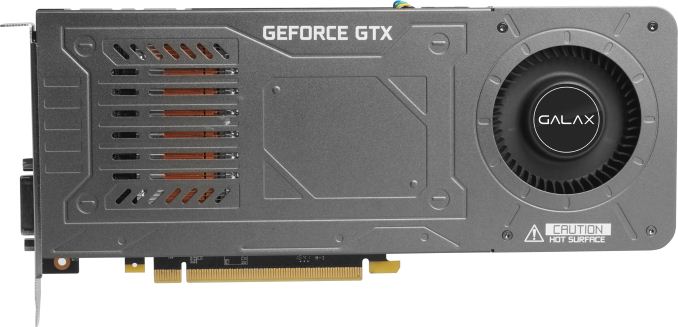
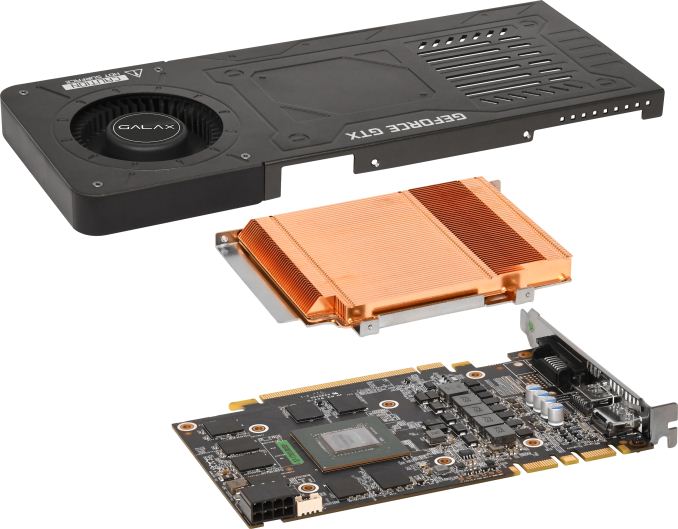
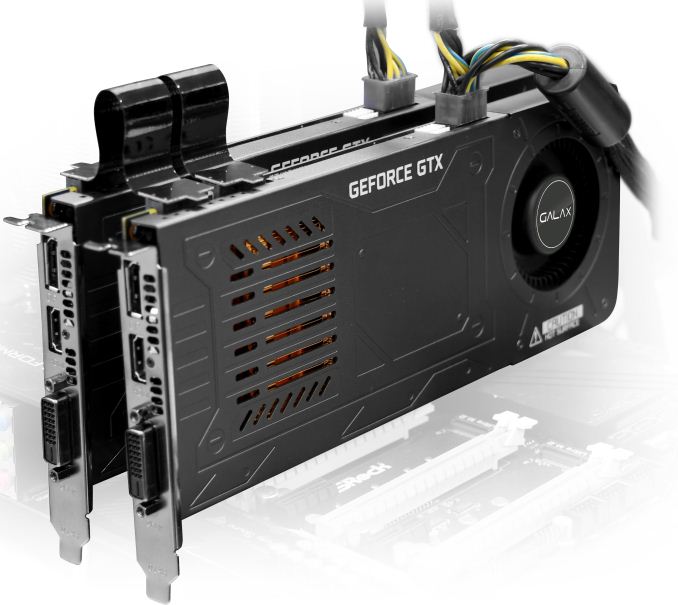

 Quote
Quote
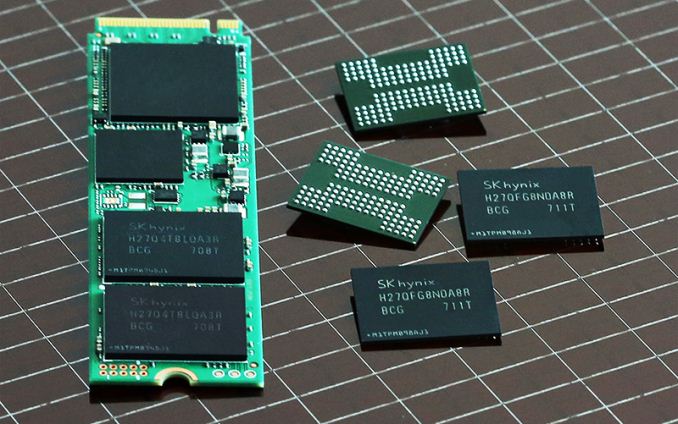



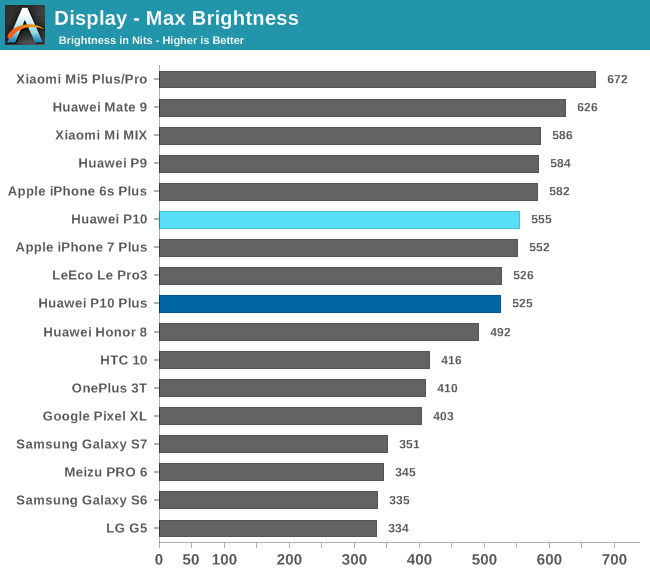
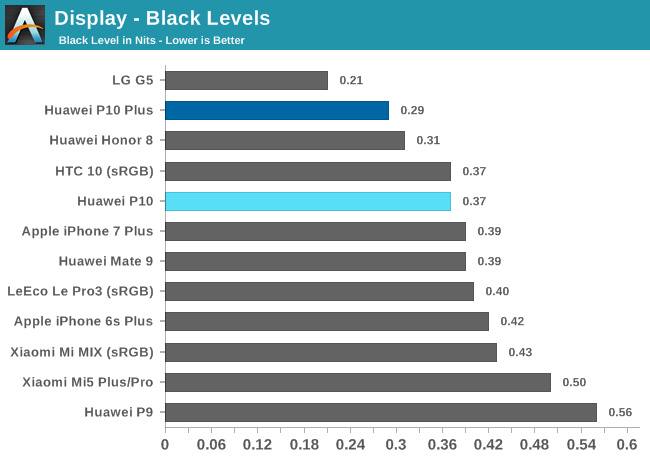
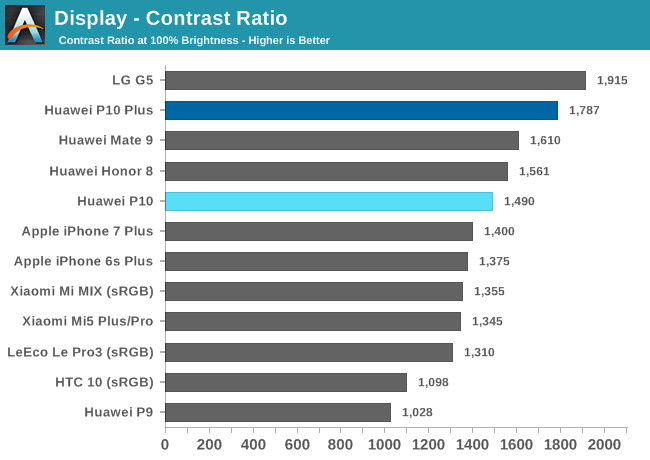
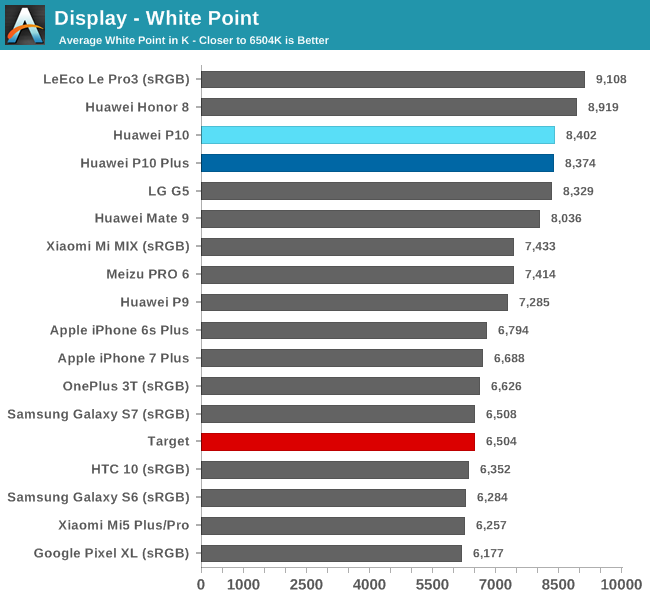
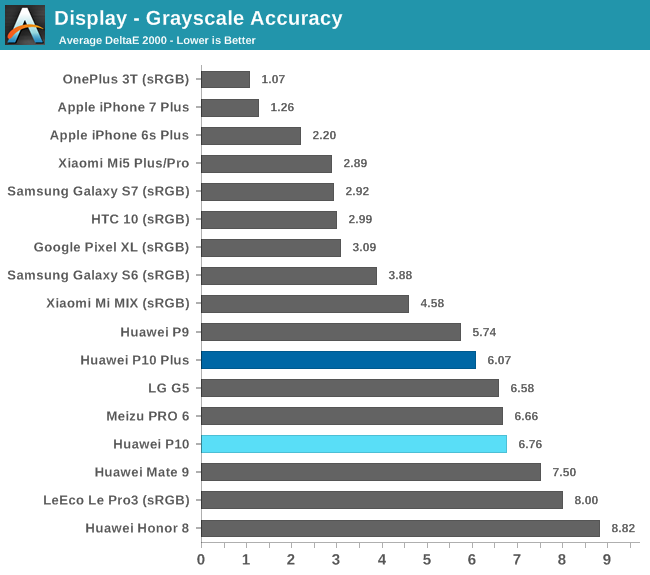
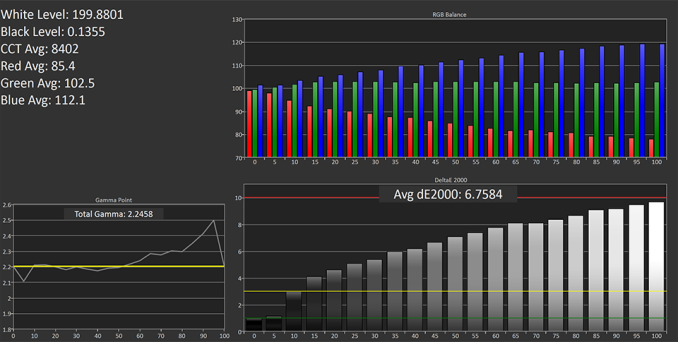


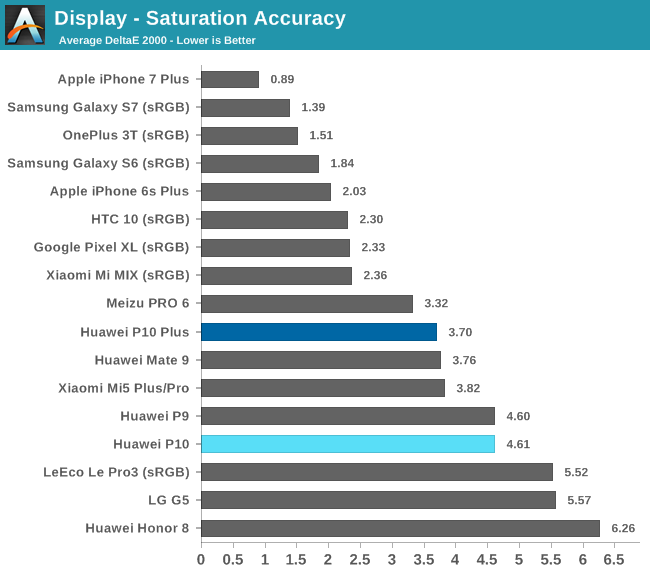

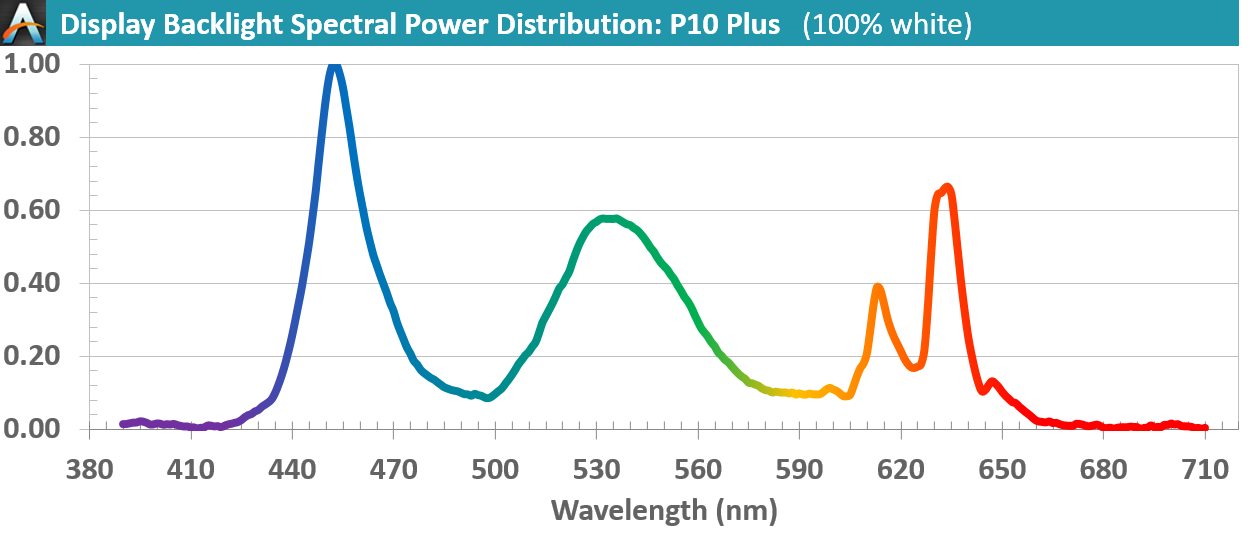
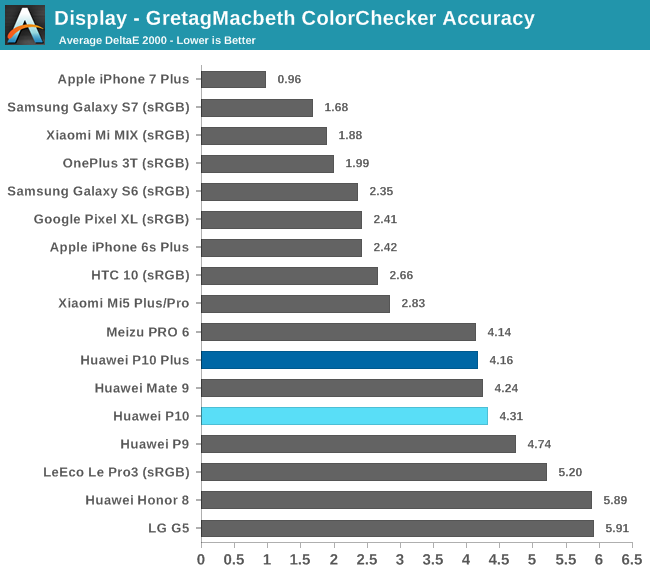



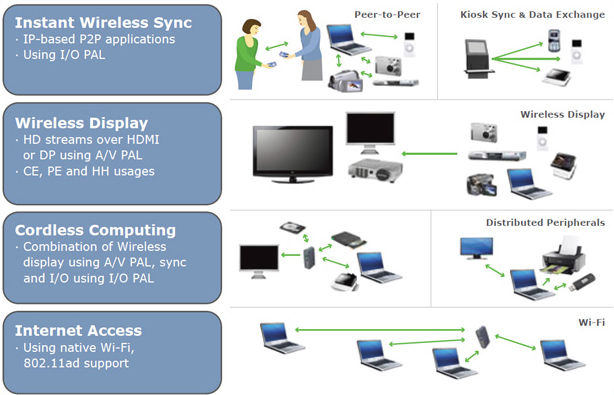

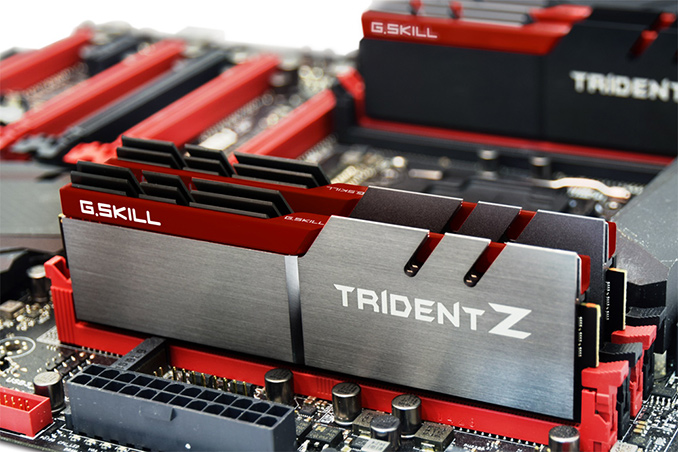
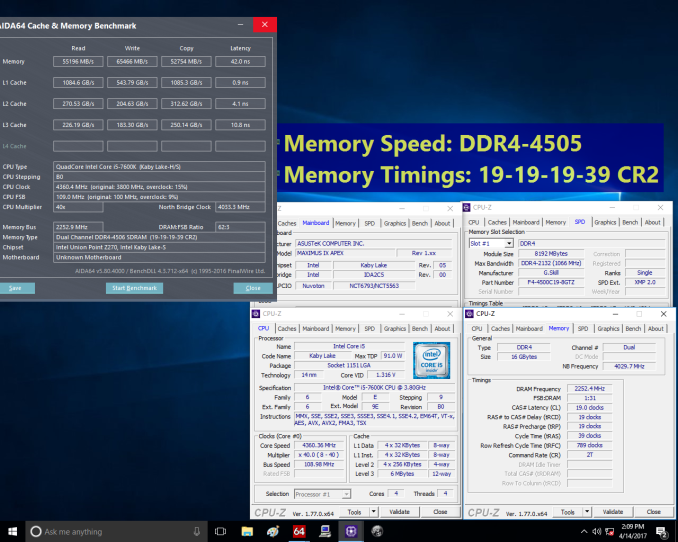
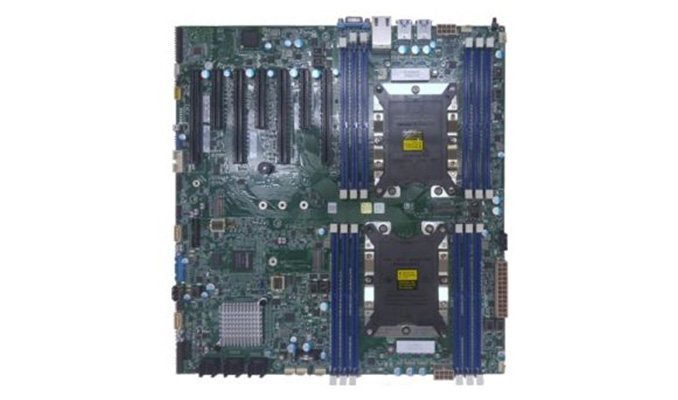
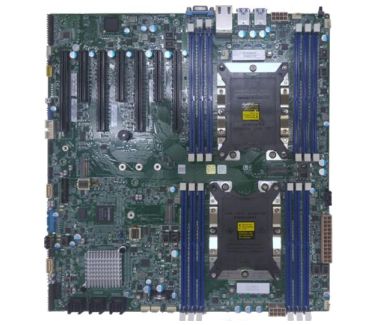
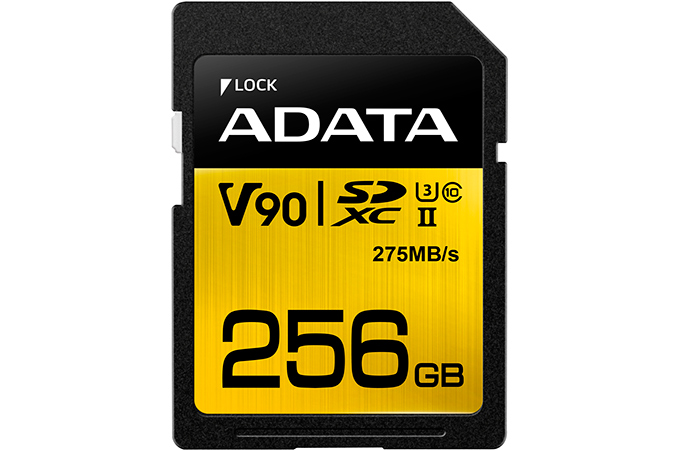
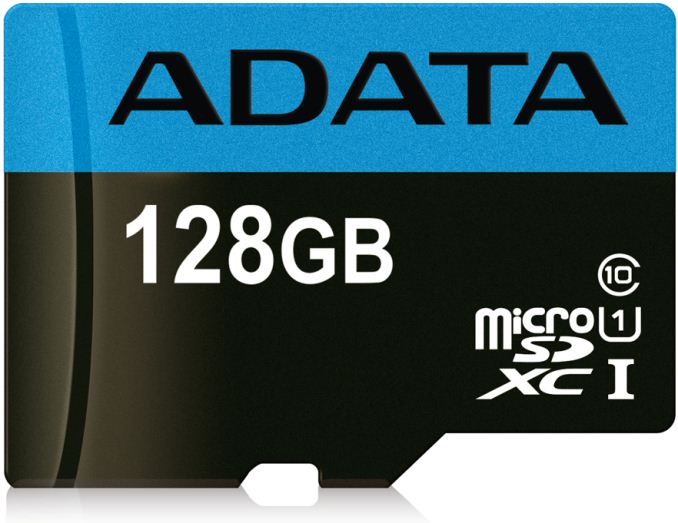
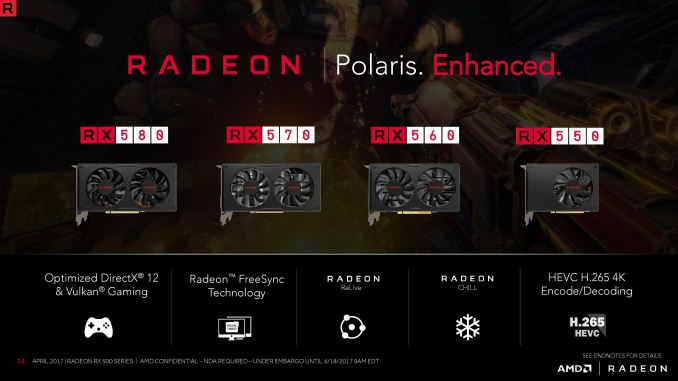
















Bookmarks